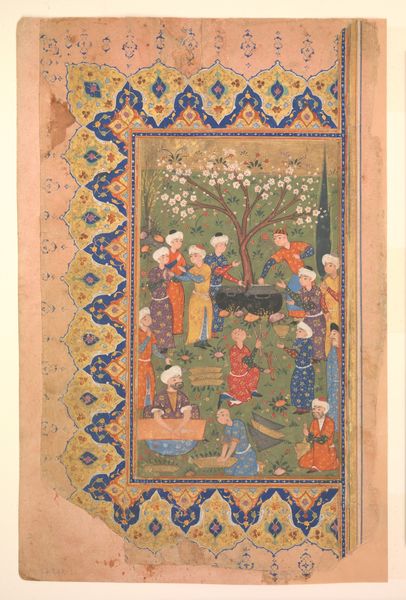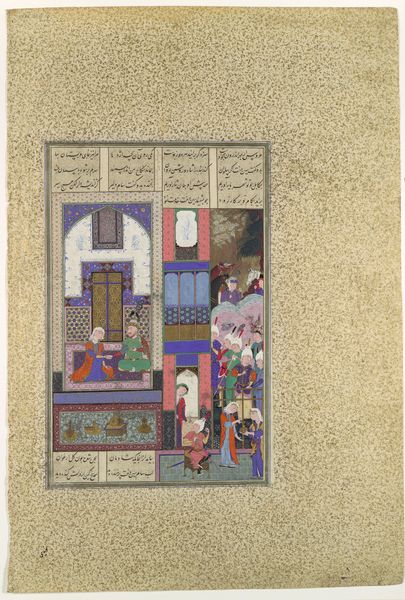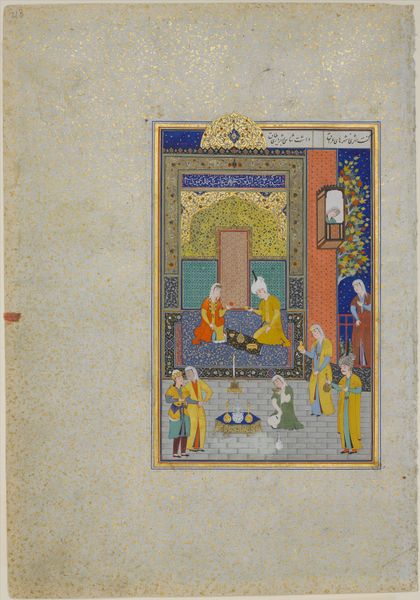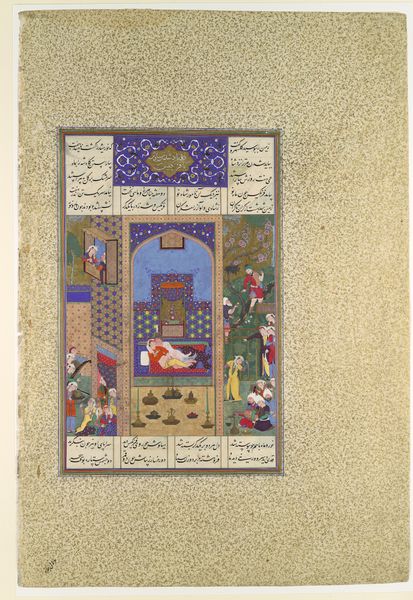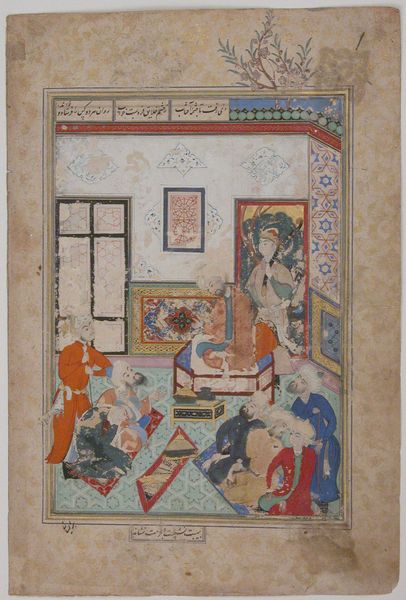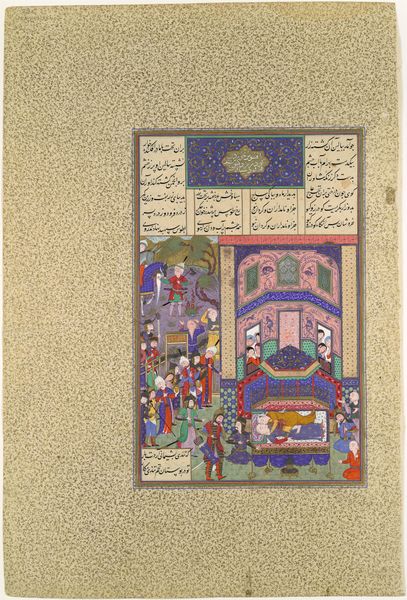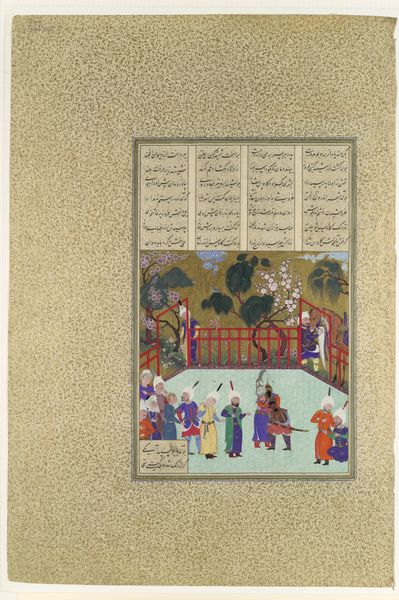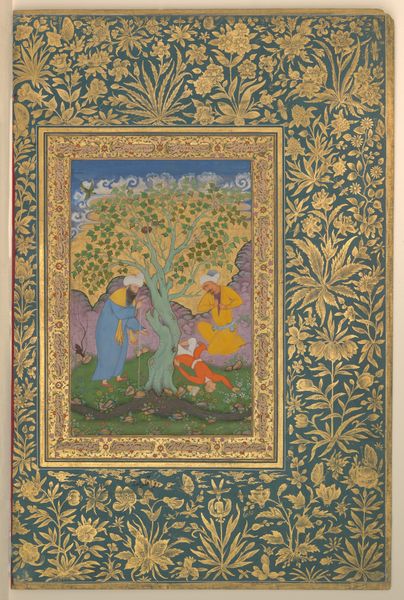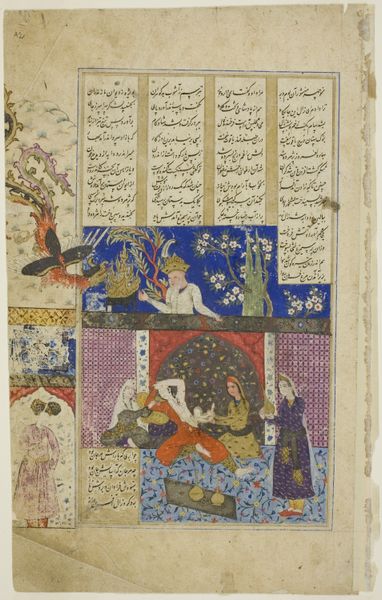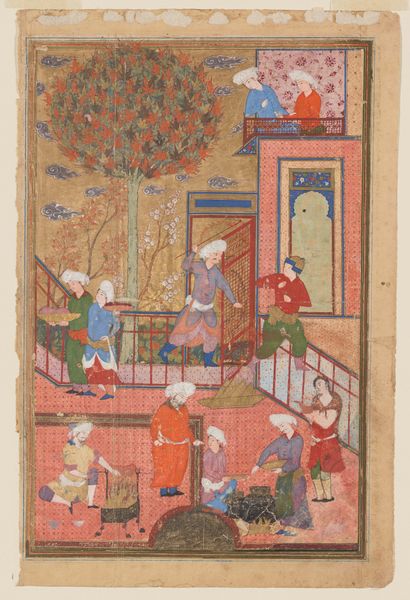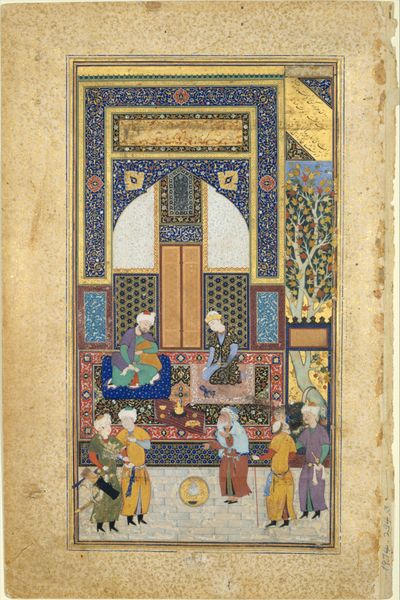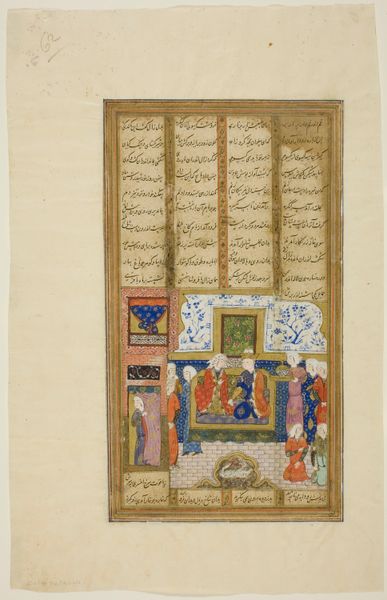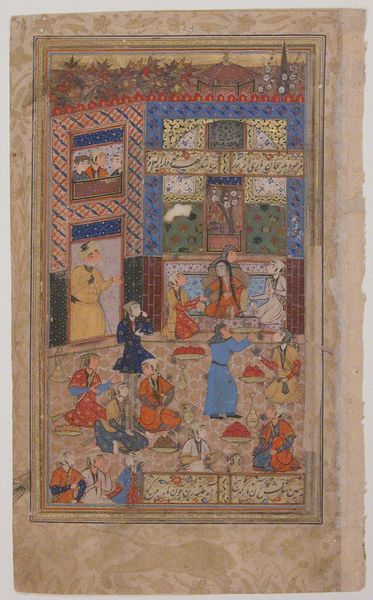
painting, gold, watercolor
#
water colours
#
narrative-art
#
painting
#
asian-art
#
gold
#
landscape
#
figuration
#
watercolor
#
islamic-art
#
watercolour illustration
#
miniature
Dimensions: 6 x 3 1/2 in. (15.24 x 8.89 cm)
Copyright: Public Domain
Curator: We're looking at "Garden Scene with Princes and Attendants," a watercolor and gold painting from around the 15th century, currently housed at the Minneapolis Institute of Art. Editor: My immediate reaction is one of constrained opulence. There’s something very formalized about the setting, the almost claustrophobic use of gold leaf in the background clashing interestingly with the attempt at naturalism in the garden. Curator: It’s fascinating how the artist merges detailed figuration with that shimmering, almost abstracted, background. Considering it was made with watercolor and gold, we have to remember the value ascribed to the materials themselves and how that might have influenced the perception of the piece. Labor and materials, particularly gold, signaled power and luxury, inherently elevating the scene. Editor: Absolutely, but it goes beyond just the materials. The scene is staged. It's not a naturalistic snapshot of daily life but a carefully constructed presentation of power dynamics. Who were these princes? How did the presentation of such scenes help to uphold existing structures of class and gender? The placement of the attendant also plays into this. The attendant's role in tending to the garden creates a dynamic reflecting power imbalances. Curator: It also encourages one to consider labor within artistic production. The use of gold and painstaking detail in the tile work reminds us of the skilled artisans employed in the creation of this miniature and the collaborative nature of artistic creation, regardless of it being attributed to an anonymous author. Editor: Right. We need to acknowledge those unknown hands and their contributions, especially when examining representations of labor. There’s a direct line we can trace from their work on this painting to the lives and representation of other labourers. In the context of that, the depiction of men of privilege in nature and what would it represent about gender relations during its historical moment. Curator: Precisely. This pushes us to reconsider historical and social context. Editor: Agreed. Seeing "Garden Scene with Princes and Attendants" prompts crucial dialogues about visibility, power, and the untold stories etched within gilded frames.
Comments
minneapolisinstituteofart almost 2 years ago
⋮
A beautiful arrangement of forms and richly orchestrated colors, rather than the illustration of a specific narrative, distinguishes this lovely miniature. The romantic fairyland world it depicts is drawn from the work of the well-known Persian author Sa'di. The mystical-didactic writings of Sufi poet-scholars Sa'di (13th century) and Tamu (d. 1492) were immensely popular. Accordingly, miniature paintings based on their verse often served as visual metaphors for a spiritual union with the divine by representing the physical union of two lovers—in this case, two princes.
Join the conversation
Join millions of artists and users on Artera today and experience the ultimate creative platform.
